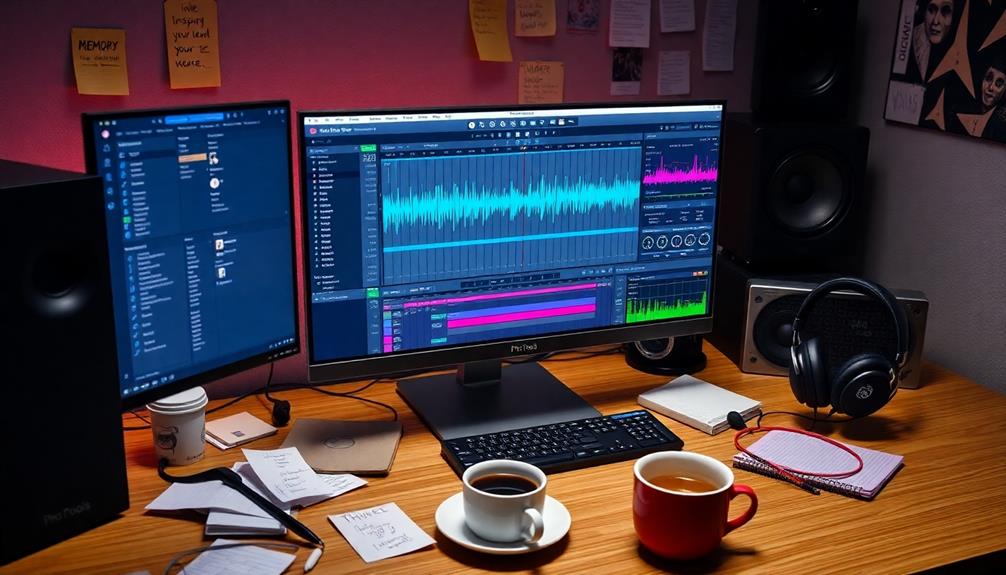To access maximum performance in FL Studio, start by adjusting your audio driver settings—use ASIO drivers for better CPU management and set your buffer size to 256 samples. Enable multithreaded processing to utilize multiple CPU cores effectively. For plugins, activate Smart Disable to reduce load and keep an eye on your CPU usage with the Plugin Performance Monitor. Make sure to assign heavy plugins to dedicated mixer tracks and consider freezing tracks to conserve CPU power. With these tweaks, you'll maximize your workflow and minimize glitches. You're just scratching the surface of performance enhancement!
Key Takeaways
- Select the ASIO driver in audio settings for optimal CPU resource management and improved sound card communication.
- Adjust buffer size starting at 256 samples for recording, and increase for mixing to reduce audio crackling.
- Enable multithreaded processing in plugin and mixer settings to distribute workload across multiple CPU cores effectively.
- Use Smart Disable on plugins to deactivate unused ones, minimizing CPU load and freeing up resources.
- Regularly monitor CPU temperature and usage to prevent thermal throttling and maintain consistent performance.
Understanding CPU Overload

When you're working in FL Studio, it's essential to keep an eye out for signs of CPU overload, as it can really throw a wrench in your creative process. You might notice glitching, sound crackling, or pops during playback, especially when your CPU meter approaches 100%.
Laptop users or those with slower CPUs are particularly vulnerable, given their limited processing power and the demands of multiple simultaneous processes.
To combat CPU overload, start by identifying its root causes. High buffer lengths, excessive plugin usage, and inefficient routing of audio tracks can all contribute to increased CPU usage.
To optimize performance, adjust your general settings by enabling multithreaded processing. This allows FL Studio to utilize multiple cores of your CPU more effectively, reducing strain.
Make sure your audio device is set up with the ASIO driver, which can also help minimize latency and improve performance.
Regularly monitor your CPU temperature and usage during intensive tasks to prevent thermal throttling, which can worsen overload issues.
Audio Driver and Buffer Settings
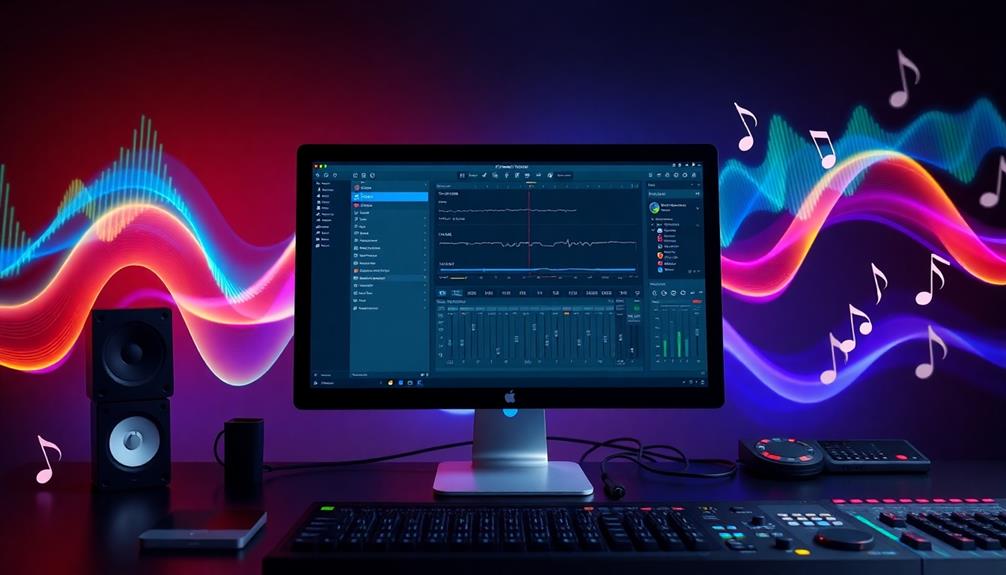
Selecting the right audio driver and adjusting your buffer settings are essential for achieving peak performance in FL Studio. Using ASIO Drivers, like ASIO4ALL or FL Studio ASIO, helps establish efficient communication between FL Studio and your sound card.
Start with a buffer size of 256 samples to reduce audio crackling, and adjust from there. Lower buffer sizes (10-20 ms) are great for recording MIDI, while higher sizes (above 40 ms) can stabilize performance during mixing without putting too much strain on CPU resources.
Enabling the Mix in buffer switch and Triple buffer options enhances stability during playback and recording, minimizing audio dropouts.
Additionally, make sure your sample rate aligns across your computer and audio interface—preferably at 44.1 kHz—to guarantee top-notch audio quality.
Don't forget to check the Multithreaded generator processing option in your Audio Settings for improved performance mode.
System and Project Optimization
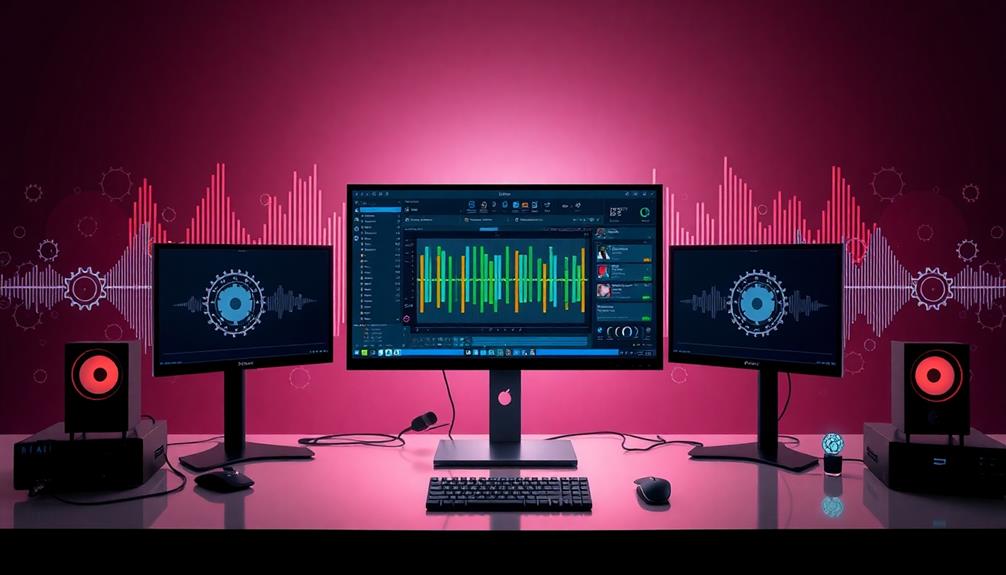
Optimizing your system and project settings greatly boosts FL Studio's performance, ensuring a smoother workflow. Start by selecting the ASIO driver in your audio settings. It manages CPU resources better than standard drivers, which is vital for high performance.
Adjust your buffer size based on your project needs—begin with 256 samples for recording and increase it if you hear crackling during playback. This balance between latency and processing power is essential. Additionally, consider establishing an emergency fund to handle unexpected expenses, similar to building a financial cushion for your music production creating a retirement savings plan. Experimentation is key, so don’t hesitate to tweak your buffer settings further as your session demands grow more complex. For optimal performance and reduced strain on your system, consider setting up external SSDs to store sample libraries or audio files, which can enhance your workflow efficiency. Coupled with a well-organized file management system, this setup ensures your focus remains on creativity rather than troubleshooting technical bottlenecks.
Next, enable "Allow threaded processing" in your plugin settings. This allows FL Studio to distribute workloads across multiple CPU cores, enhancing efficiency. For ideal project configuration, assign heavy generators to dedicated mixer tracks instead of routing all tracks to one. This helps prevent core overload and improves overall processing.
Regularly review your project settings, too. If high resolution isn't necessary, lower your P.P.Q. (Pulse Per Quarter note) to minimize CPU load. Additionally, consider using global Smart disable for plugins that aren't in use, further freeing up resources.
Plugin Management Techniques
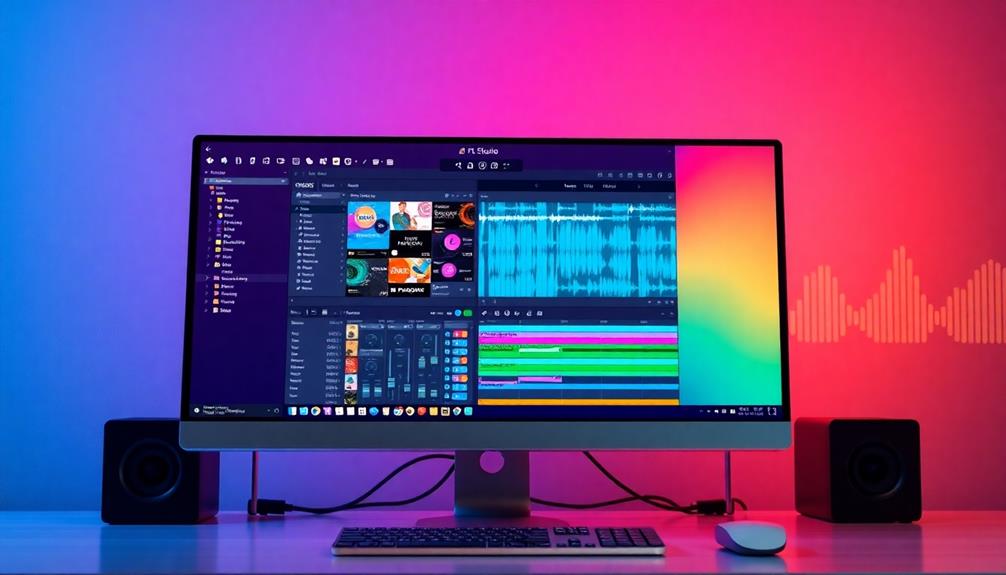
Effective plugin management is essential for maintaining high performance in FL Studio and guaranteeing your creativity flows without interruption. Start by enabling the Smart Disable feature, which automatically deactivates unused plugins, greatly cutting down CPU load. You should also verify that your VST library matches your FL Studio version to avoid unnecessary bridging, which can increase CPU consumption.
Utilize the Plugin Performance Monitor to identify CPU-intensive plugins. If you find any, consider closing or replacing them with more efficient alternatives. Additionally, enable multithreaded processing in the plugin wrapper settings by ticking "Allow threaded processing." This distributes the workload, enhancing performance during complex projects.
Here's a quick reference table for effective plugin management techniques:
| Technique | Description |
|---|---|
| Smart Disable | Deactivates unused plugins to reduce CPU load. |
| VST Library Compatibility | Match VST library to FL Studio version. |
| Monitor Plugin Performance | Identify and replace CPU-intensive plugins. |
Lastly, close unused plugin interfaces to free up CPU resources. Remember, every open interface consumes power that could be better used for FL Studio audio processing tasks.
Additional Performance Tips
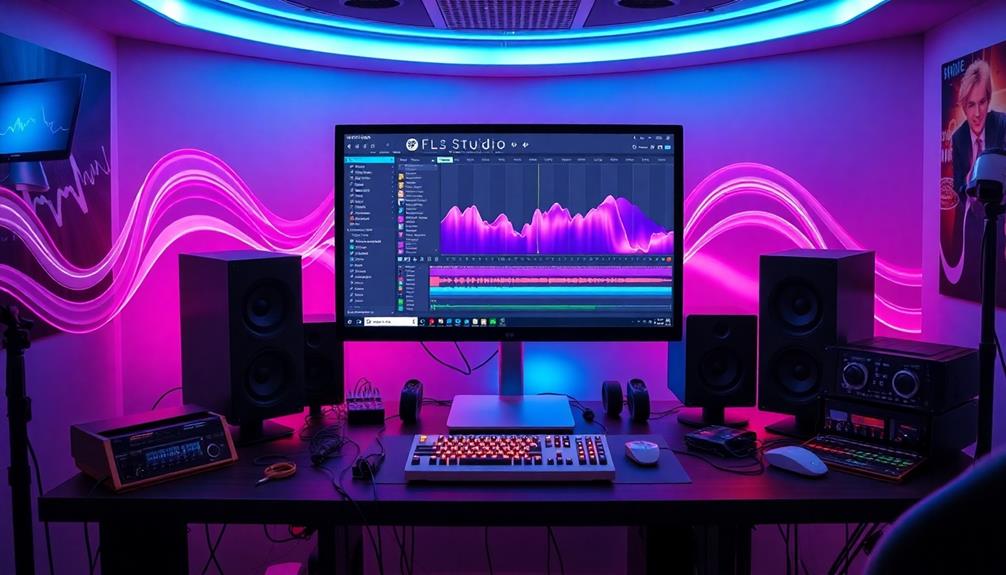
Many users find that tweaking a few additional performance settings in FL Studio can greatly enhance their workflow. First, make sure to enable Smart Disable for plugins. This feature automatically deactivates unused plugins, considerably reducing CPU load and freeing up resources for your active processes.
Next, explore the mixer settings and activate multithreaded processing. This allows FL Studio to distribute workloads across multiple CPU cores, resulting in better performance.
It's essential to regularly monitor and adjust your buffer size. Start with a buffer length of at least 256 ms for mixing. If you're experiencing CPU overload, increase it. However, lower it for live recording to minimize latency.
Consider freezing tracks in your project to convert MIDI data to audio, which will also free up valuable CPU resources without sacrificing sound quality.
Lastly, keep your project settings optimized by reducing the Project P.P.Q. (Pulse Per Quarter note). If high resolution isn't necessary, lower values can considerably decrease CPU workload during playback, ensuring your sessions run smoothly.
Frequently Asked Questions
How to Get Better CPU Performance in FL Studio?
To boost CPU performance in FL Studio, use an ASIO driver, maintain a buffer length around 10 ms, enable multithreaded processing, utilize Smart Disable for plugins, and close unnecessary background applications for peak efficiency.
How to Boost FPS in FL Studio?
You might think boosting FPS is tricky, but it's not! Start by using an ASIO driver, adjusting buffer length, enabling multithreading, and disabling unnecessary plugins. Optimize your power settings for a smoother experience overall.
How to Make FL Studio Run Smoothly?
To make FL Studio run smoothly, select an ASIO driver, keep your buffer length above 10 ms, enable multithreading, monitor CPU usage, and optimize your Windows power settings for maximum efficiency and performance.
How Do I Turn on Performance Mode in FL Studio?
Did you know that enabling Performance Mode can cut CPU usage by up to 50%? To turn it on, click "Options" in the top menu, then select "Enable Performance Mode" from the dropdown. You're ready to go!
Conclusion
By fine-tuning your FL Studio settings, you're setting the stage for stellar soundscapes and seamless sessions. With smart system strategies, savvy plugin practices, and savvy audio adjustments, you'll banish that pesky CPU overload. So, immerse yourself in these dynamic tips and release the full power of your production prowess. Embrace efficiency, elevate your expertise, and enjoy an exhilarating experience as you craft enchanting compositions with confidence!


